-- Published: Sunday, 25 January 2015 | Print | Disqus
By Michael J. Kosares
The new year has ushered in a remarkable and unexpected turn of events for gold. It is up significantly in four of the seven top currencies (the euro, British pound, Australian and Canadian dollars), up respectably in two others (U.S. dollar and Japanese yen) and down slightly in the last (Swiss franc).
The significant gains in gold’s value in a very short period of time demonstrate amply the value of gold as a hedge, not just against inflation, but against sudden currency devaluation and systemic financial and economic risks as well. In short, it is important to see that gold owners in these countries got the protection they sought against adverse circumstances when they first purchased the metal. In short, gold has performed as advertised.
Here is the amount gold has risen in percentage terms in the top currencies thus far this year (through 1/23/2015):
1. Euro – up 18.8%
2. Canada $ – up 16.6%
3. British £ – up 13.1%
4. Australia $ – up 12.4%
5. U.S. $ – up 9.2%
6. Japan ¥ – up 6.6%
7. Swiss Fr – down 2.6%
In the chart form, here is what those percentage gains look like:
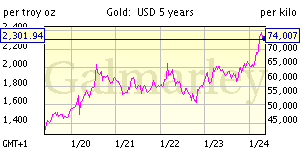
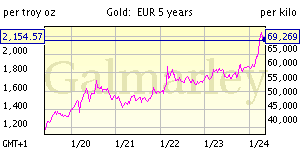
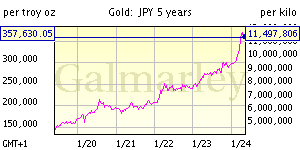
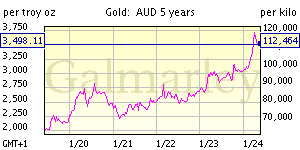
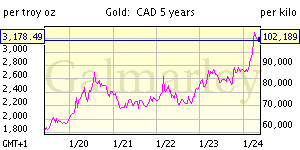
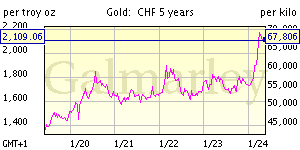
Please note the big spikes in the euro, pound, Canada and Australia dollar charts. The spiking reaction in Europe, on the surface, appears directly attributable to the European Central Bank’s introduction of quantitative easing, but there is more to it than that as explained below.
In Australia and Canada, the plummeting oil price has played a key role in driving down the two currencies precipitously, and gold sharply higher. It seems only a matter of time until the central banks in those two countries introduce their own versions of quantitative easing as a matter of necessity.
The Japanese yen chart shows a similar spike in the gold price, but a good portion of the upswing occurred late last year. (This post focuses on gold’s 2015 price performance.) In that regard, the yen price of gold led the pack.
Gold was performing similarly in the Swiss franc until the Swiss National Bank pulled the rug on its peg – a maneuver that resurrected the safe haven status of the currency and put a hold on the gold price.
Gold’s broad rally in 2015, in my view, could very well signal resumption of the secular bull market that has been at rest for the past two years. Some will argue that we have seen false starts in the gold price during this period previously and that this is simply a repeat. I counter with the argument that none of those rallies were as broadly-based, as driven by a confluence of seminal events or displaying such sharp out-of-the-gate trajectories. Make no mistake, though it appears that gold and quantitative easing might be directly correlated, what is really going on is that both simply are reacting to the same problem – a bad economy with the potential for systemic financial and economic breakdown. Central banks respond by printing money. Investors respond by buying gold.
http://www.usagold.com/
| Digg This Article
-- Published: Sunday, 25 January 2015 | E-Mail | Print | Source: GoldSeek.com

